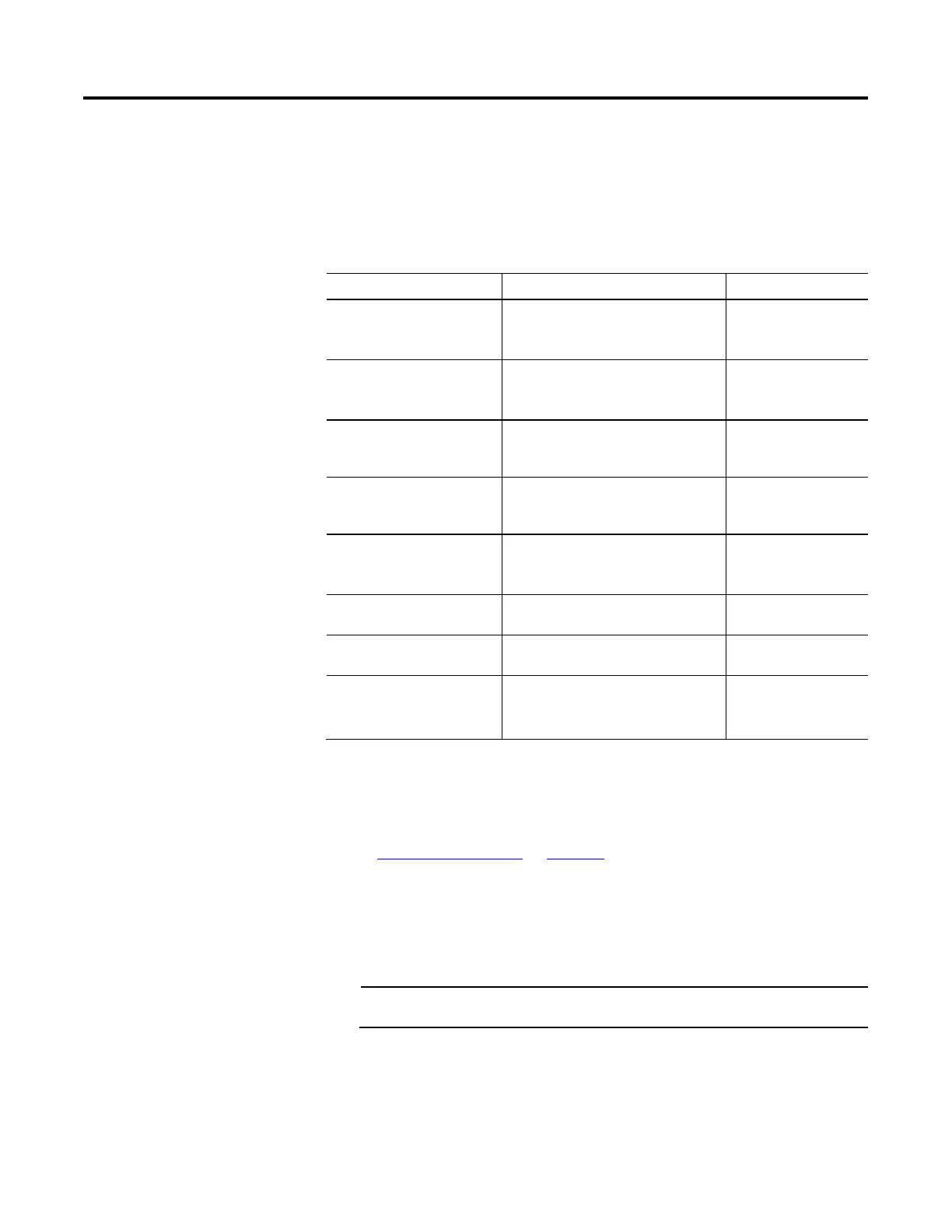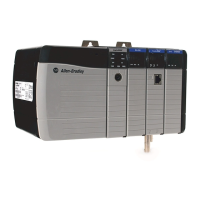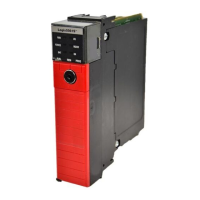Common Attributes for Advanced Process Control and Drives Instructions
552 Rockwell Automation Publication 1756-RM006K-EN-P - November 2018
Tip:
When entering an array subscript, make sure it is within the boundaries of the specified array.
Instructions that view arrays as a collection of elements generate a major fault (type 4, code 20) if a
subscript exceeds its corresponding dimension.
Bit addressing is used access a particular bit within a larger container. Larger
containers include any integer, structure or BOOL array. For example:
Definition Example Description
Variable0
defined as LINT
has 64 bits
variable0.42 This example references the
bit 42 of variable0.
variable1
defined as DINT
has 32 bits
variable1.2 This example references the
bit 2 of variable1.
variable2
defined as INT
has 16 bits
variable2.15 This example references the
bit 15 of variable2.
variable3
defined as SINT
holds 8 bits
variable3.[4] This example references bit 4
of variable3.
variable4
defined as COUNTER structure
has 5 status bits
variable4.DN This example references the
DN bit of variable4.
MyVariable defined as BOOL[100]
MyIndex defined as SINT
MyVariable[(MyIndex AND NOT 7) / 8].[MyIndex
AND 7]
This example references a bit
within a BOOL array.
MyArray defined as BOOL[20] MyArray[3] This example references the
bit 3 of MyArray.
variable5
defined as ULINT
holds 64 bits
variable5.53 This example references the
bit 53 of variable5.
Use Bit Addressing anywhere a BOOL typed tag is allowed.
See also
Index Through Arrays on page 551
The Logix Designer programming application includes faceplate controls for some
function block instructions. Faceplates are Active-X controls used in applications
that acts as an Active-X container. The faceplates communicate with the
controller via the <RSLC> OPC Server or the FactoryTalk Linx Gateway.
Important:
The Logix Designer programming application is not a valid Active-X container. An Active-X
container is required to use the faceplates.
These instructions have faceplates:
• Process Discrete Input (PDI)
• Process Discrete Output (PDO)
Controls

